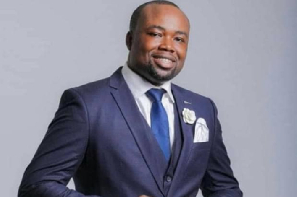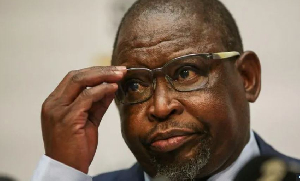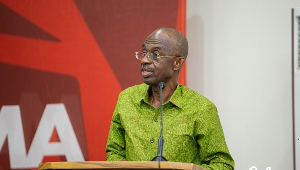The Ashanti-Techiman Chieftaincy Conflict: A Case Of Nkrumah’s Chickens Coming Home To Roost
The recent violence that was engendered by the misunderstanding between the Paramount Chief of Techiman on the one hand and the Paramount Chief Tuobodom and the Asante King on the other has no doubt raised the political temperature in the country to a fever pitch. Because of the rise in the political temperature many Ghanaians have understandably questioned the importance and relevance of the institution of chieftaincy in the 21st century.
My main aim in this piece is to contribute to this important and timely national discourse with regards to this primordial institution by arguing that the institution is as relevant today as it was in the past and that its seeming reactionary nature is the result of unwarranted state interventions in the operation of the institution over the years. My second aim is to demonstrate that even though the negative impact of state interventions in chieftaincy matters has been haunting the country as a whole, Brong/Ahafo especially is a case study of the political expediency which afflicts national policy formulation and implementation. This situation, without a doubt, reached its apogee during the First Republic under Dr. Kwame Nkrumah.
With regard to the relevance of the institution of chieftaincy, the importance of the institution’s historic role in the social-economic development of our peoples cannot be overemphasized. In the pre-colonial period, chiefs constituted the social, economic, and political system that governed our society, while the colonial and post-colonial periods were characterized by bifurcation of governance with the juxtaposition of traditional governance structures with those of the modern nation state.
Consistent with this co-existence of traditional and modern structures of governance and the crucial role it plays in our decentralized local government system, the fundamental law of our land, the 1992 Constitution, guarantees the institution of chieftaincy under Article 271 (1). In fact, on the question of decentralization, article 242 (d) of the Constitution makes it mandatory for the President of the Republic to consult with the respective traditional authorities in the appointment of the thirty percent (30%) of the members of the District Assemblies.
Chieftaincy: A competing centre of political power
It is beyond dispute that because of their sole mandate for the political, economic and social development of our society before the inauguration of the colonial project, chieftaincy has always been an important centre of power and, depending upon the attitude of the ruling elite of the nation state, the relationship between chiefs and the state has either been one of cooperation or competition; it is beyond dispute that the competitive relationship between the state and chiefs was largely manifested during the First Republic under Dr. Nkrumah.
It is worthy of note that the post-modernist preoccupation with the search for a hybrid of traditional and modern governance model is not an entirely new development because in the immediate post-independence period, a similar call to integrate the two parallel governance systems by the neo-traditionalists amongst the intelligentsia was rejected outright by republican idealists like Dr. Nkrumah who wanted either a complete abolition of the institution or a drastic reduction in the powers of chiefs.
In fact, a leading economic adviser to Nkrumah at the time, Arthur Lewis, for example, laments Nkrumah’s rejection of the view that the new African states used agriculture to build their economies and employed ethnic-based coalitions (Read traditional leaders).
Brong/Ahafo Region: A historical perspective of the manifestation of Nkrumah’s reckless local government policy The current edition of the New Legon Observer contains an article which I co-authored with Lawyer Obeng Busia, Ghana’s immediate past Consul-General to the United States. The paper dealt with the subject of the history of the creation of the Brong/Ahafo region and it was written in response to a proposal to erect Dr. Nkrumah’s statue at the Jubilee Park in Sunyani in place of that of Dr. Busia by the Brong/Ahafo Regional Coordinating Council at the behest of the new Regional Administration because of the former’s role in the creation of the region.
The article thinly alluded to the fact that Nkrumah did not create the region out of love for the peoples of the region, but rather out of political expediency, for given his republican ideals and nihilistic attitude towards traditional leadership on the eve of our Republican Constitution, Nkrumah could not have created the region for any reason other than self-interest. The self-interest which drove Nkrumah to facilitate the creation of a separate region for Bonos and Ahafos can be further gleaned from a critical analysis of the objective conditions on the ground prior to the creation of the region. The area occupied by the present-day Bonos and Ahafos, was, like most areas in the country, part of the mighty Asante Empire on the eve of the inauguration of the colonial project; in fact, literally translated, the word Ahafo means “hunters”, and according to the historical record, the people who settled there were subjects of the Asante Empire who were game hunters for successive Asante Monarchs.
Even though following colonization the geographical area occupied by the Bonos and Ahafos became part of the Asante region (Western Asante) for administrative purposes, there was a great deal of resentment on the part of these two ethnic groups because of the historically inferior status accorded them by the Asantes, a situation which continued to reflect in the skewed distribution of resources in the region during the colonial period.
The Bono Nkyempem Movement and Nkrumah’s opportunism
It was against this background of resentment of Bonos and Ahafos against their continued “subjugation” to Asante suzerainty that led to the formation of the Bono Nkyempem Movement under the leadership of such outstanding Paramount Chiefs as Nana Akumfi Ameyaw I (Techiman and the direct uncle of the current Chief), Nana Agyeman Badu I (Dormaa), Nana Abrefa Mbore Bediatuo (Wenchi), Nana Ofosu Gyeabour (Bechem), the Paramount Chief of Acherensua and a few others. The main aim of this “Nationalist” movement was to agitate for the creation of a separate region for Bonos and Ahafos.
In fact, it is on this issue of the creation of a separate region for Bonos and Ahafos that the record needs to be set straight on the roles played by different political actors from and outside the region. For example, because of the fact Dr. Busia held opposing political beliefs to those of Dr. Nkrumah, Nkrumaists in the region have always sought to belittle the role Busia played in the agitation by Bonos and Ahafos for a separate region. Nothing could be further from the truth on this position.
Even though Busia, like most citizens of the “Greater” Asante region, served the region well and, had in fact, gone to Parliament for the first time on the ticket of the Asante Legislative Council in 1951, personally resented the subjugation of Bonos and Ahafos to the Asante. In a letter he wrote in 1939 (The region was created in 1959) at Oxford to his cousin, C.E. Donkor, who also happened to be a staunch Nkrumaist, this is what Busia said:
“…you do not seem to realise that I cannot achieve my life work; the creation of a Great and United Brongland without you and Sammie, and that therefore any consideration of my future must include you. The time is not yet ripe. Do not be impatient’’ (My emphasis).
Be that as it may, Nkrumah saw in the formation of the Bono Nkyempem Movement a golden opportunity to break the Asante-Bono/Ahafo front which had been his political headache since the formation of the National Liberation Movement (NLM), the largest opposition to his rule, in the region. Consequently, Nkrumah sided with the Brong and Ahafo chiefs and engineered the legislation which created the Brong/Ahafo region in 1959, only a year before he ushered in his “Republican” Constitution in 1960!
Needless to say, all these leading Bono and Ahafo Paramount Chiefs and their followers became staunch members of Nkrumah’s Convention Peoples Party (CPP) setting the stage for the subsequent violent clashes between them and followers of the UP tradition between and within particular towns of the newly-created region. Nkrumah followed this up with direct intervention in chieftaincy matters in the region and elsewhere by destooling some chiefs, jailing some and chasing others into exile.
“Modern” and “Traditional” boundaries: A harbinger of conflict Nkrumah was the quintessential politician and a master tactician. Like the colonial administrators before him, he was keenly aware that the “modern” political boundaries which demarcated the country into administrative regions were not always co-terminus with the “traditional” boundaries which divided the country into traditional areas on the basis of pre-colonial wars of conquest. However, because Nkrumah, like the colonial administrators, wanted to divide these close cousins who formed the Greater Asante region, went ahead and carved out a separate region for Bonos and Ahafos without any effort to address the perennial problem of the overlap between modern administrative and traditional boundaries; this problem was not exclusive to the Greater Asante region, but was more prevalent there.
It is common knowledge that because pre-colonial state formation was largely dependent on wars of conquest, subject towns were not always situated within the geographic boundaries of a traditional area; such subject towns became known as “satellites” of the respective paramountcies and were legitimated by “Divisional” titles with seats in the traditional councils. For example, in the Brong/Ahafo region, prominent towns like Abesim, Bomaa, and Chiraa are all satellites of the Dormaa traditional state, in spite of the great physical distances between these towns and the “traditional” capital of the state, Dormaa Ahenkro.
Similarly, towns like Kukuom, Tepa, Nchiraa, Offuman, and Tuobodom in the Brong/Ahafo region are satellites of the Asante Kingdom and have historically owed allegiance to the Golden Stool. This obfuscation regarding modern and traditional boundaries of political power and authority is best illustrated by the position of the current President of the Brong/Ahafo Regional House of Chiefs, Nana, Osabarima Kwaku Aterkyi III, the Paramount Chief of Kukuom Traditional Area. While by history and custom the Kukuom Paramountcy owes allegiance to the Golden Stool, Nana Aterkyi III is the President of the Brong/Ahafo Regional House of Chiefs by virtue of his traditional state lying within the geographic boundaries of Brong/Ahafo region.
Conclusion
Since the eruption of the violent conflict involving the paramountcies of Techiman and Tuobodom and by proxy, the Asante King, the chieftaincy institution has come to occupy the centre stage in the national development discourse. Those of our compatriots who have always harboured suspicions about the institution because of its hereditary nature have had a field day in attacking the institution without objective appraisal of its strengths and challenges. What has been absent so far from this ongoing discourse is the bravery to be objective about the root causes of the problems that are facing the institution now, that is, the fact that the institution is highly political and that politicians over years, especially during the First Republic, have not helped much to make it less so with their direct and indirect interference in chieftaincy matters.
It is in light of this that the Asante King’s call on the government to dismiss the current Brong/Ahafo Regional Minister should be given urgent attention because of the regional administration’s reckless reading of the history of the region and the disastrous consequences it is having on social cohesion in the region.
Chieftaincy in Africa is not only an integral part but is also a vital element in the social, political and cultural establishment of African communities. It is a dynamic institution that reflects and also responds to the evolving political and social transformations of society.
The institution of chieftaincy and the institutions of the modern state are located along the line where the traditional world meets the modern-state administration. Therefore, as Africa continues to develop its political institutions to serve the demands of a democratic government in the modern state, the position of chiefs will continue to attract the attention of policy makers.
Professor Acheampong Yaw Amoateng, PhD, is a Sociologist and an expert on Traditional Governance. In 2007 the United Nations Economic Commission for Africa commissioned him to lead a study on “Harnessing Traditional Leadership for Service Delivery in the Southern Africa Region”.
Opinions of Monday, 29 March 2010
Columnist: Amoateng, Acheampong Yaw


















